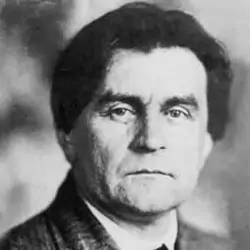Kasimir Malevitch tapestry after Suprematist Composition 1916 unique piece hand-woven in wool 240 x 166 cm
Discover the timeless masterpiece for lovers of art and interior design, the Kasimir Malevitch Tapestry after Suprematist Composition 1916. This unique piece is carefully hand-woven with the highest quality wool , measuring an impressive 240 x 166 cm. She embodies the energy and avant-garde vision of Suprematism, an artistic movement centered on fundamental geometric shapes and pure colors. This splendid tapestry reflects the aesthetic and philosophy of Kasimir Malevich, making it more than just a decorative piece, but a cultural investment for collectors and enthusiasts of the art of artists' rugs. Suprematist Composition is a 1916 painting by Kazimir Malevich, a Ukrainian painter of Polish origin. The painting was created in 1916 and remained with the artist until June 1927. Malevich exhibited his work at the Grosse Berliner Kunstausstellung in Berlin, but soon left for the Soviet Union.
- Shipping:
- Return Policy: We understand that buying a rug can be a big investment and we want you to be completely satisfied with your purchase. For this reason, we offer a 30-day return policy for rugs purchased from our site. If you are unhappy with your rug for any reason, you may contact us within 30 days of receiving your order to request a return. Carpet must be in its original, unused, undamaged condition with all tags and accessories included. We reserve the right to refuse a return if the rug is not in its original condition. Return costs are the responsibility of the customer, unless the rug is faulty or we have made an error in your order. If your rug is eligible for a refund, it will be processed within 5 days of receipt of the returned rug. Please note that our 30 day return policy does not apply to personalized or bespoke rugs, which are subject to specific return conditions. We encourage you to read this information carefully before placing your order. If you have any questions regarding our return policy or would like to return a rug, please contact us and we will be happy to assist you.
Learn More
Kasimir Malevich |  |
Kasimir Malevich was born in kyiv, Ukraine, at the kyiv-Vasilkovskaya Catholic Maternity Hospital of St. Alexander. His father, Severin Antonovich Malevich (1845–1902), was the director of one of the industrial sugar (beet) refining factories owned by Ukrainian businessman Nikolai Tereshchenko. His mother, A. Ludwig (1858–1942), was a housewife. Kasimir Malevich was the eldest of 14 children, including nine daughters who survived to adulthood. From 1895 to 1896, he attended the kyiv School of Painting in the class of the painter Nikolay Pymonenko. For the next two years, he studied at the Parhomovka College (Imperial Russia). From 1898 to 1904, young Kasimir lived in Kursk (Russia). In 1899, he married Kazimiera Zglejc (or, transcribed from Russian: Kasimira Ivanovna Zgleits) (1883-1942), with whom he had two children, Anatolii (1902) and Galina (1909). He then moved to Moscow in 1904. After his father's death, he worked as an industrial designer for the railways. In fact, he mainly developed his activity as a self-taught painter, drawing inspiration from the currents he could observe around him and from the European avant-gardes: realism, impressionism, symbolism, Cézannism, fauvism, neo-primitivism, cubo-futurism, alogical cubism, suprematism, supernaturalism. This was made possible in particular thanks to the opportunity to visit the collections of Ivan Morozov and Sergei Shchukin, who had already made a selection of modern French painters. His early works reflect these trends exactly, as can be seen in The Bather of 1910, which is explicitly Fauvist, The Woodcutter of 1912, inspired by Léger's tubes, and The Grinder of 1912, which is futuristic. He also joined the Russian avant-garde, participating in the exhibitions of "The Jack of Diamonds" (1910), "The Donkey's Tail" (1912) and "The Target" (1913). It was during this period that he developed a zaum tendency. This expression refers to a way of deconstructing language based on sounds and no longer on meanings. He took several paths to transcribe it into painting: a-logical canvases and drawings like An Englishman in Moscow, drawings that are defined by their title like Brawl on the Boulevard and finally the creation of a zaum opera. In 1913, he staged the avant-garde opera Victory over the Sun with Mikhail Matyushin for the music and Alexei Kruchenykh for the libretto, performed in December in Saint Petersburg. Malevich created geometric costumes and sets composed of square-shaped canvases. It was then that he would later seek to draw the thread of this aesthetic into his painting. | |